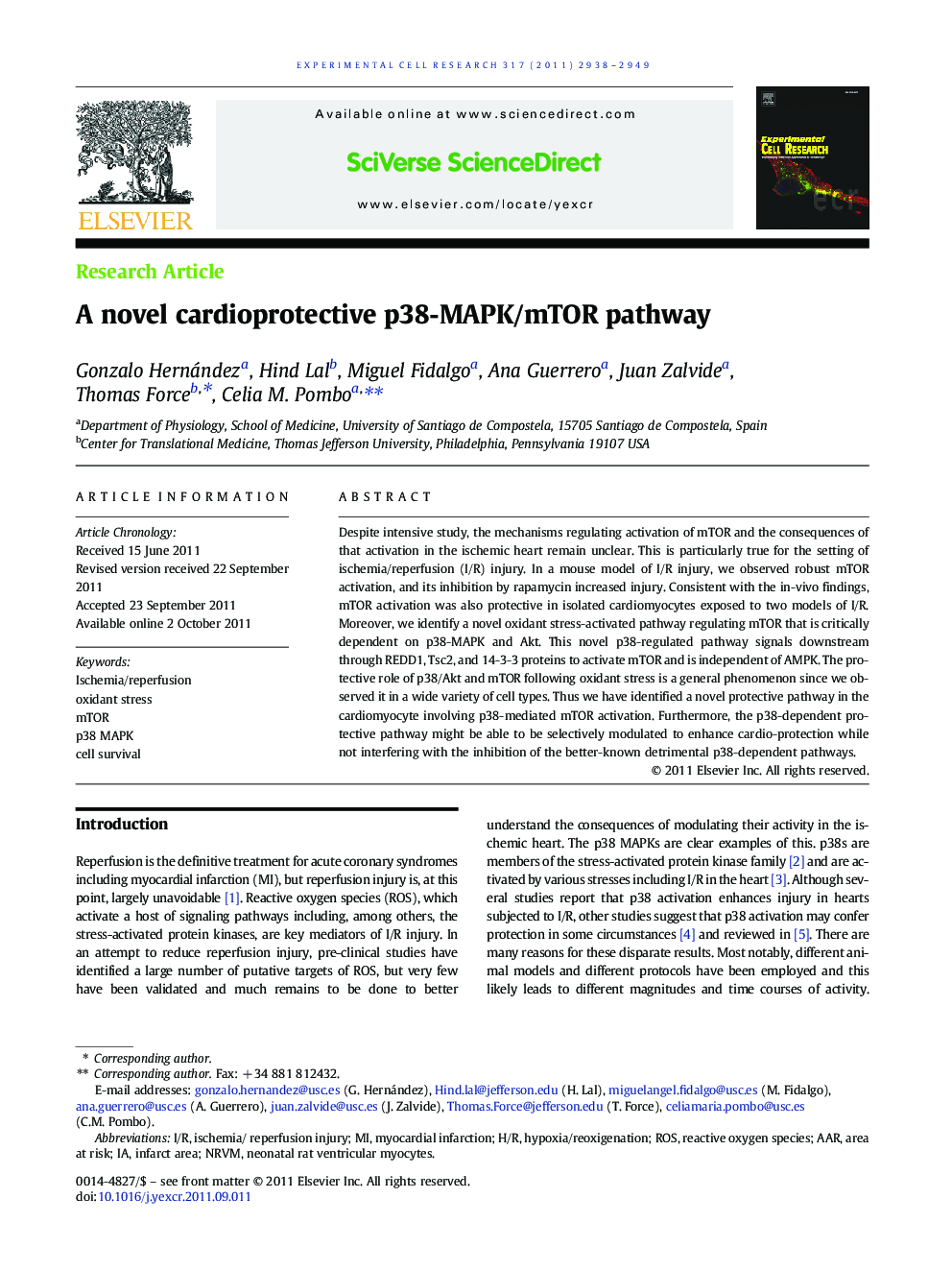| Article ID | Journal | Published Year | Pages | File Type |
|---|---|---|---|---|
| 2131225 | Experimental Cell Research | 2011 | 12 Pages |
Despite intensive study, the mechanisms regulating activation of mTOR and the consequences of that activation in the ischemic heart remain unclear. This is particularly true for the setting of ischemia/reperfusion (I/R) injury. In a mouse model of I/R injury, we observed robust mTOR activation, and its inhibition by rapamycin increased injury. Consistent with the in-vivo findings, mTOR activation was also protective in isolated cardiomyocytes exposed to two models of I/R. Moreover, we identify a novel oxidant stress-activated pathway regulating mTOR that is critically dependent on p38-MAPK and Akt. This novel p38-regulated pathway signals downstream through REDD1, Tsc2, and 14-3-3 proteins to activate mTOR and is independent of AMPK. The protective role of p38/Akt and mTOR following oxidant stress is a general phenomenon since we observed it in a wide variety of cell types. Thus we have identified a novel protective pathway in the cardiomyocyte involving p38-mediated mTOR activation. Furthermore, the p38-dependent protective pathway might be able to be selectively modulated to enhance cardio-protection while not interfering with the inhibition of the better-known detrimental p38-dependent pathways.
